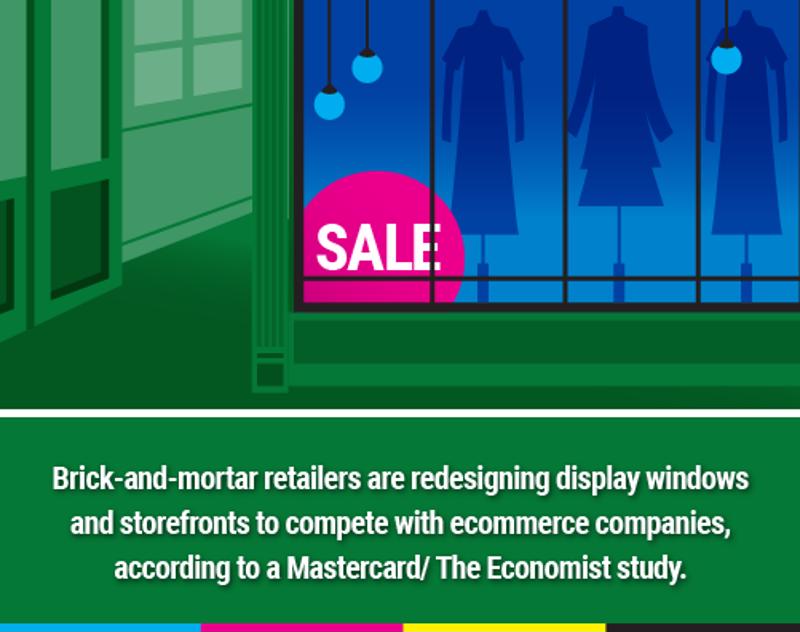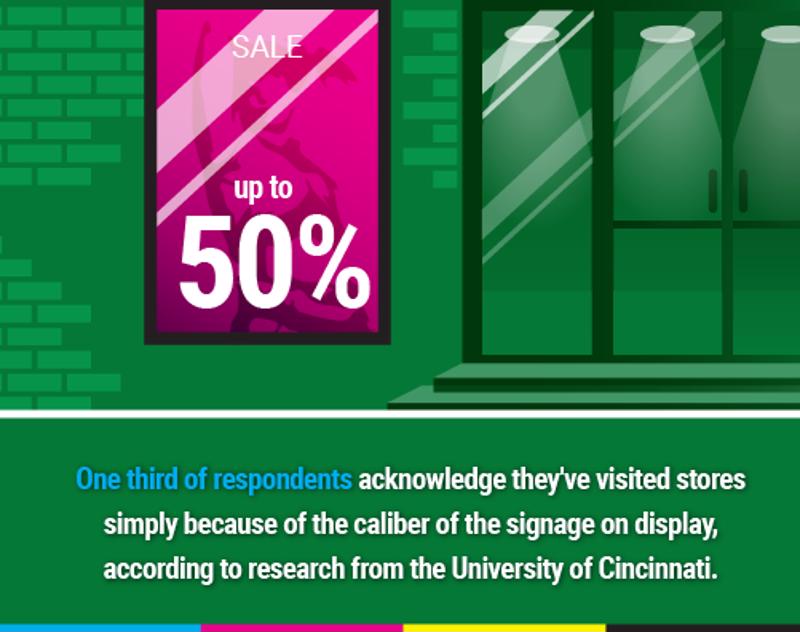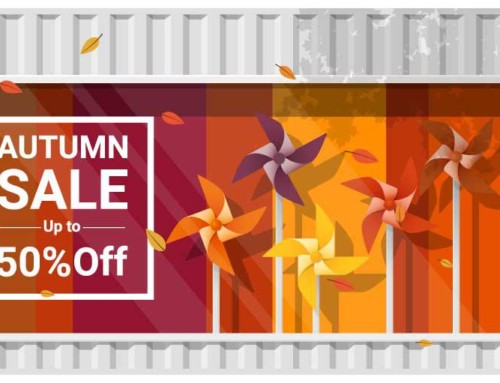The rise and continued success of ecommerce has served as a bit of a double-edged sword for brick-and-mortar retailers. On the one hand, organizations like Amazon, Overstock.com and other household-name e-tailers have forced store locations to adapt by optimizing the shopping experience, whether by delivering unparalleled customer service or growing their product selections.
On the other hand, while online rivals haven’t cut into traditional retailers’ profits quite as much as conventional wisdom might suggest, the shop-from-home capabilities ecommerce affords has caused in-store customer traffic volume to slip.
 Hopkins Printing can help you redesign your storefront displays to attract new customers.
Hopkins Printing can help you redesign your storefront displays to attract new customers.As a recently released study shows, however, brick-and-mortar operations aren’t taking this turn of events lying down and aim to turn the tables in short order. How so? In part, by renovating their interiors and refreshing their outdoor and interior signage.
Of the 10 ways in which traditional retailers intend to compete with online-only opposition, chief among them is by redesigning their display windows and storefronts, according to a joint report conducted by MasterCard and The Economist.
Modernizing interiors can yield results
Several studies over the years have corroborated the role quality signage can play in driving sales. Indeed, according to the Sign Research Foundation, 60 percent of business owners say that updating or adding to their signage resources led to growth in sales, rising as much as 10 percent, on average. High-quality signage is also a proven draw for first-time visit customers. One third of respondents acknowledge that they’ve visited stores for the first time simply because the caliber of the signage on display piqued their interest, according to research from the University of Cincinnati.
Examples like these help to explain why brick-and-mortar retailers intend to update or already have redesigned their visual communication devices, such as see-thru window signs. When done effectively, they get noticed, and can provide current and would-be customers with insight they may not be privy to by shopping with their handheld devices or laptop computers.
Fifty-seven percent of respondents plan on increasing the frequency with which they introduce brand new items.”
New product promotion, more in-store demos
Modernation is one way that traditional retailers are fighting back against the e-tail powers that be. They’re also looking to swell foot traffic by promoting new products, which entails signage. Fifty-seven percent of respondents in the aforementioned joint report said they plan on increasing the frequency with which they introduce new items. Some of the more effective ways of calling attention to these products is with graphics, such as endcaps, shelf talkers and standees. Typically made out from Coroplast or foamboard, standees help promote consumer products, such as those that customers may not have seen before, through the use of vivid colors, clever phrases or eye-catching designs.
These same display options may be used to promote in-store demonstrations. Approximately 80 percent of retail professionals surveyed said they have either already carved out space in their brick-and-mortar locations for live demos or intend to do so within the next 24 to 36 months. Once again, in-store events must be advertised and high-quality signage – in its wide variety of forms – accomplishes that, helping conventional retailers more effectively level the playing field.
 Eye-catching signage can bring new customers in off the street.
Eye-catching signage can bring new customers in off the street.All this being said, the ongoing fight for customers’ spending is not a zero-sum game, where one side wins and the other loses. Brandon Famous, executive managing director of the International Council of Shopping Centers, said that when online retailers fare well, it’s a “W” for the U.S. economy and retail as a whole.
“Most people think, ‘Oh, online sales are going to take over all retail sales.’ That’s not true,” Famous explained. “What it will do is enhance brick-and-mortar retail to a significant degree.”
Physical stores and ecommerce can have a synergistic effect. As ICSC found in its study “The Halo Effect,” when a brick-and-mortar shop opens for the first time, online traffic to the same company’s website grows by an average of 37 percent.
ICSC President and CEO Tom McGee said retailers are best served by leveraging ecommerce in tandem with shop locations, thereby enhancing their digital and physical presence.
Whether you’re looking to direct customers to your company’s website or stylize drab interior signage so that they’re more pleasing to the eye, Hopkins Printing has you covered. As an Idealliance G7 Master Colorspace company, we stop at nothing to go above and beyond the ink to bring your interior exterior graphics to life. Contact us for a free quote.



